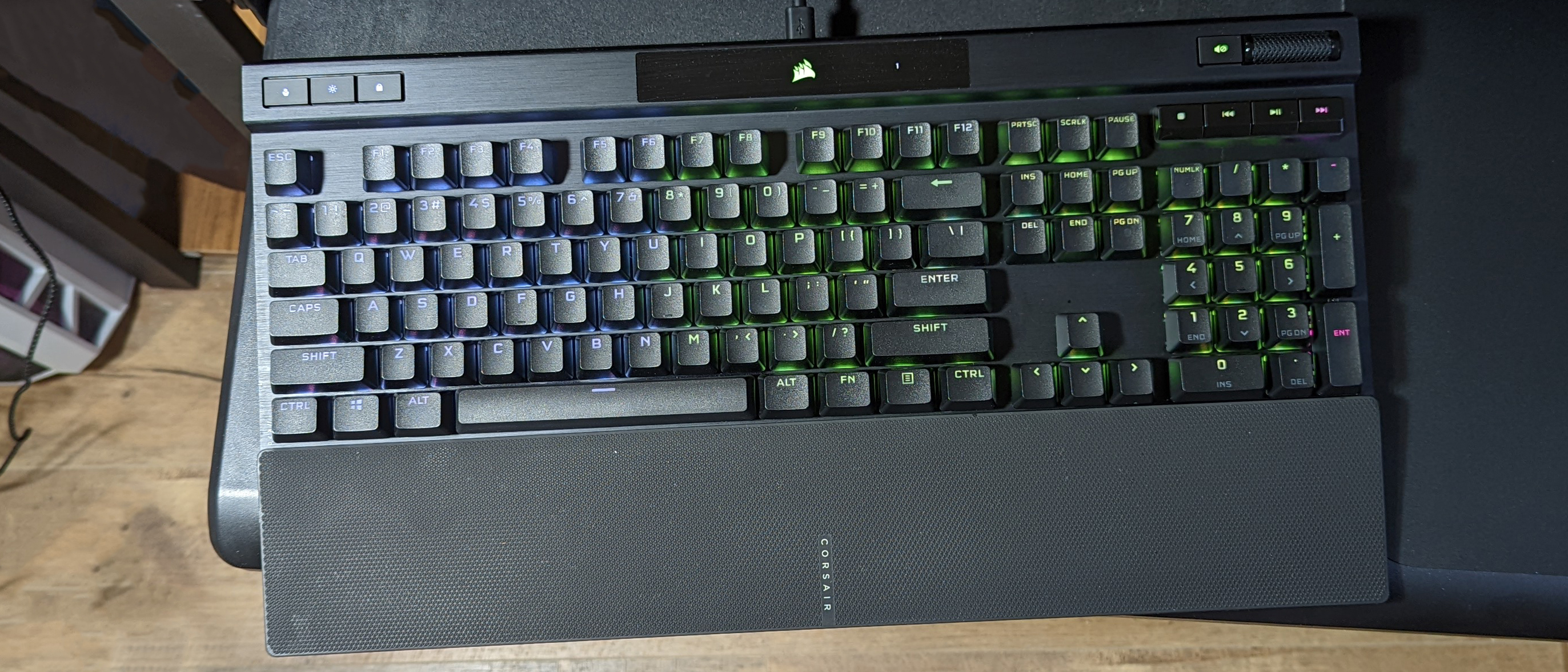Laptop Mag Verdict
The Corsair K70 RGB Pro is a solid gaming keyboard backed with a slick metallic frame, speedy silver keys, and a comfortable wrist rest, but it’s a bit pricey.
Pros
- +
Comfortable wrist rest
- +
Bright and bold RGB lighting
- +
Great gaming performance
- +
Decent companion app
- +
Speedy keys
Cons
- -
Pricey
- -
Wrist rest can get in the way
Why you can trust Laptop Mag
Whether you’re looking to wipe the floor with the competition or unleash some word vomit on a page in an enthusiastic rant, the Corsair K70 RGB Pro mechanical keyboard has got you covered.
The Corsair K70 RGB Pro features a sturdy aluminum frame packed with bright RGB keys, a comfortable wrist rest and enough power to kick virtual butt. However, at a whopping $169, the Corsair K70 RGB Pro might be a little too expensive for some people.
Despite that, the Corsair K70 RGB Pro definitely deserves to make its way onto our best gaming keyboards page.
Corsair K70 RGB Pro price and configurations
The Corsair K70 RGB Pro that I tested is the Speed Silver model and costs $169. There are five different switches that Corsair offers ranging from $159 to $169, and they all feature Cherry MX RGB mechanical keys. Here’s are the key colors and dimensions:
- Red (linear) - 45g actuation force, 2.0mm actuation, 4.0mm travel
- Blue (clicky) - 60g actuation force, 2.2mm actuation, 4.0mm travel
- Brown (tactile) - 55g actuation force, 2.0mm actuation, 4.0mm travel
- Silent Red (linear) - 45g actuation force, 1.9mm actuation, 3.7mm travel
- Speed Silver (linear) - 45g actuation force, 1.2mm actuation, 3.4mm travel
Corsair K70 RGB Pro design
The K70 RGB Pro takes on a very familiar aluminum frame from previous Corsair keyboards with a brushed black finish, while the keys have a sandblasted matte black finish that looks a bit sparkly in the light. The RGB lighting glows like a Christmas tree and contrasts well with the font used on the keys.
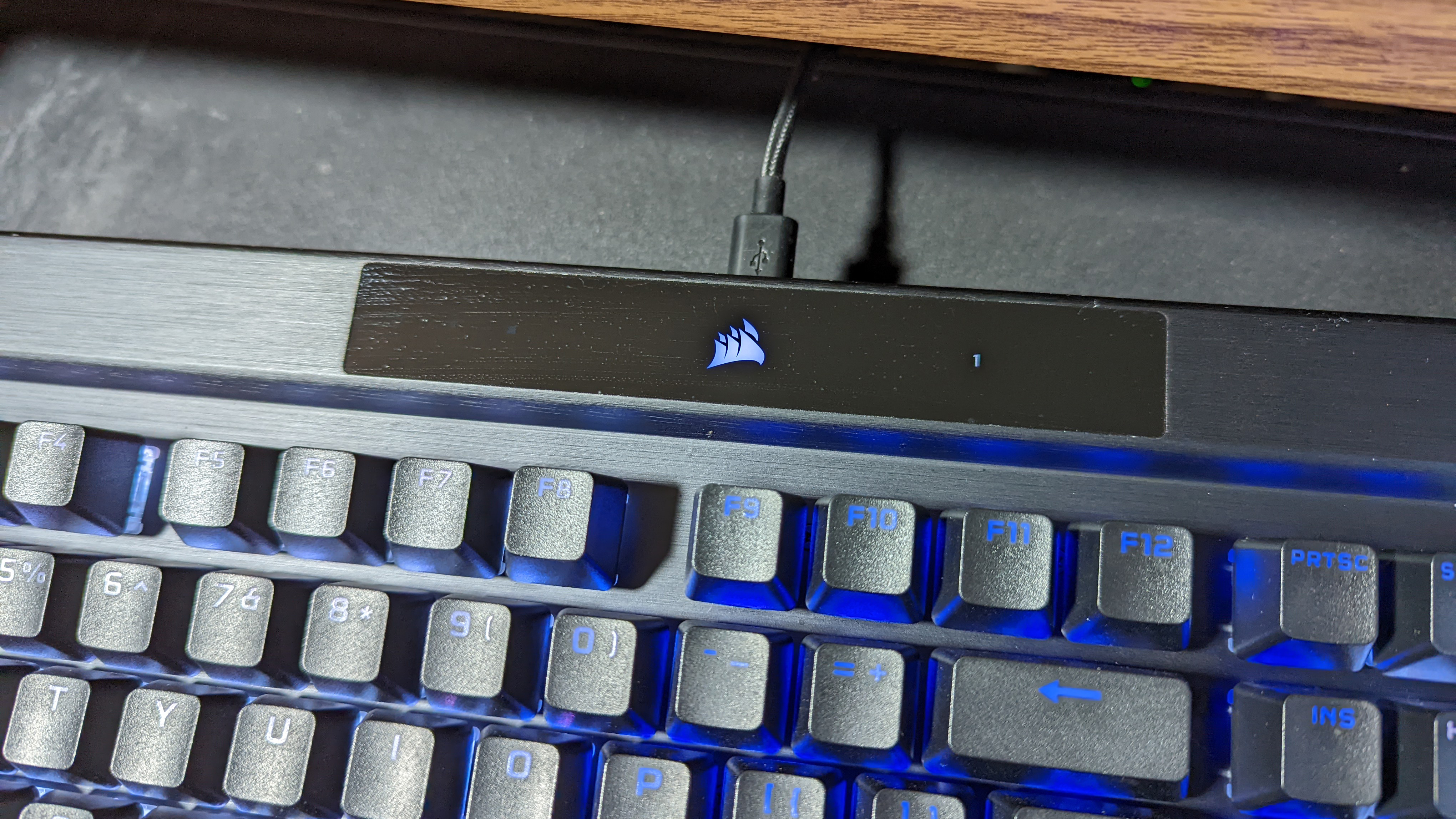
In the top-right corner of the keyboard, there’s a set of media keys (pause/play, skip, next, and stop buttons) and just above that is a wide volume rocker sitting next to a mute button (for sound). In the top left, there’s a profile switch hotkey, a brightness hotkey and a Windows lock hotkey. In between the two sets of keys is a display with a set of indicators surrounded by a Corsair logo. They cue you in when the keyboard is recording macros, muting the volume, in Windows lock, in Num lock, in Caps lock, or in Scroll lock.
The font on the Corsair K70 RGB Pro’s keys is pretty standard. It's inoffensive and there’s nothing really special about it. Let’s call it a bold, basic sci-fi font.
Sign up to receive The Snapshot, a free special dispatch from Laptop Mag, in your inbox.

The Corsair K70 RGB Pro isn’t terribly huge, coming in at 17.5 x 6.5 x 1.6 inches (without palm rest) and 2.5 pounds (without palm rest). Above the keyboard, you’ll find the USB Type-C port for charging (it is detachable), and the Tournament mode switch, which’ll set the keyboard in a setting that’s compliant with most competition guidelines. On the underside of the keyboard, there’s the usual dual clips to elevate the peripheral.
At the bottom of the keyboard, there’s two magnetic slits that let you slot in the magnetic wrist rest. It’s not the most comfortable wrist rest I’ve tested, but it’s decent enough thanks to its satisfying triangle patterns etched into it.
Corsair K70 RGB Pro keys
On the surface, you’ll see the Corsair K70 RGB Pro’s doubleshot PBT keycaps (Polybutylene terephthalate keycaps are made via a two-layer plastic injection mold), which are found in most keyboards. Underneath, our configuration of the K70 came with the company’s Speed Silver (linear) keys, which are rated for a 45g actuation force, 1.2mm actuation, and 3.4mm travel.
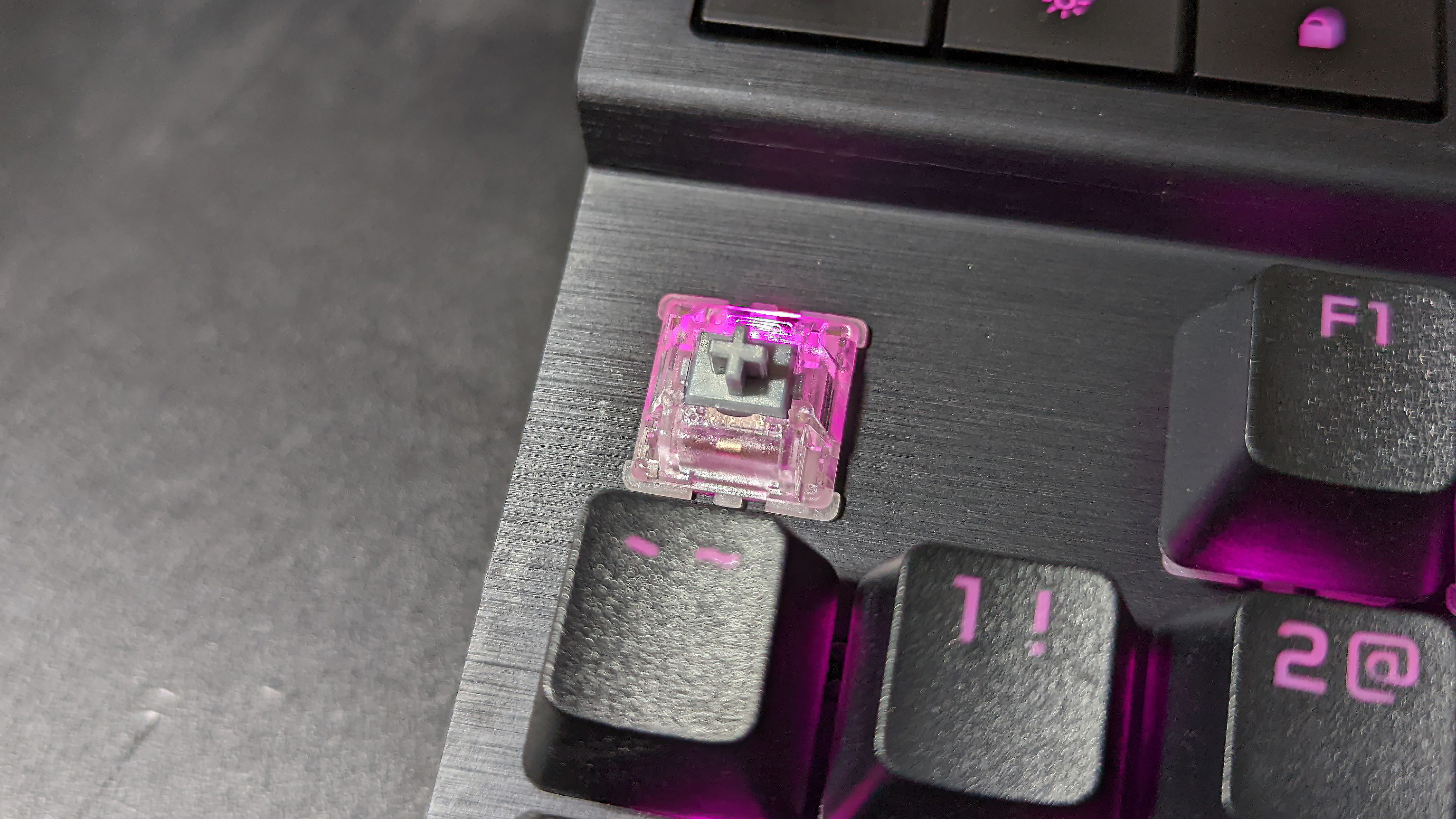
Typing on the K70 RGB Pro’s keys feels similar to Cherry Reds except it has shorter travel and the actuation triggers even faster. As a professional typer, it feels great to use at my job. And while the Silver keys are not nearly as clicky as a Blue switch, they are a bit noisy. It feels softer to type on but still hits you with a punchy click, which is bassier than the sharp Blue switch click.
When I took the 10fastfingers.com typing test, I scored 77 words per minute, which was faster than my 75-wpm on the SteelSeries Apex Pro. It’ll take time to get used to any keyboard, and since I’ve been using this for about two months, typing has been a breeze.
Corsair K70 RGB Pro performance
The Corsair K70 RGB Pro performed incredibly well under pressure against the slew of games I threw at it.

I played Control (what a wild game) on this keyboard, and it was easy to transition into a full-blown badass when I started the Jukebox trials, which is the hardest part of the game by far. I levitated (Space) and dodged (Ctrl) one of those creepy elevated bastards and swiftly launched (E) a pile of rocks at his head. The shorter actuation actually helped me get to what I wanted a little bit faster.
I’ve been working my way through Final Fantasy XIV, and there was a moment where I was frantically trying to jump away from an attack but I couldn’t click the space button. I found that at a certain angle, the palm rest actually interferes with the bottom row of keys. This can be frustrating depending on the way your keyboard sits. If it’s on a flat surface, there’s no problem, but if the palmrest is at an incline compared with the rest of the keyboard, then the issue occurs.
I also started Frostpunk recently (which I suck at), but the keyboard made it easy enough to navigate my dying civilization as I checked on the temperatures (O) and swapped between game speeds (1,2,3). Panning the camera with WASD felt smooth as well.
Corsair K70 RGB Pro features
Most of the Corsair K70 RGB Pro’s features can be accessed through Corsair’s iCue software.
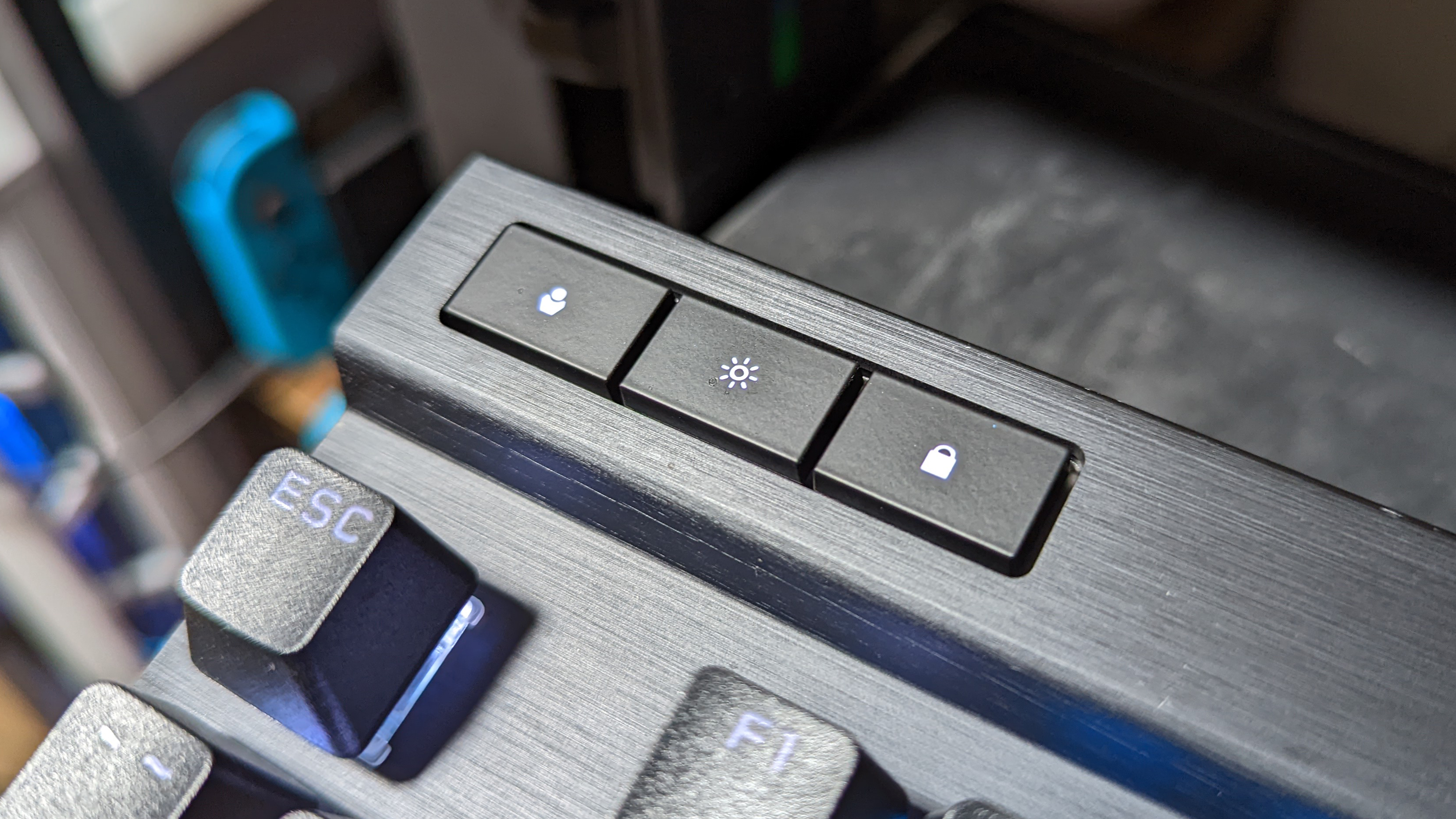
Through this app, you can access tools to adjust the key assignments, lighting effects, hardware lighting, performance and device settings. With the per-key lighting, you can adjust each individual key to suit your RGB needs. Meanwhile, you can hop into the settings to adjust the polling rate, which goes up to 8,000Hz/0.125ms (that determines how fast the keyboard transmits keystrokes to the PC).
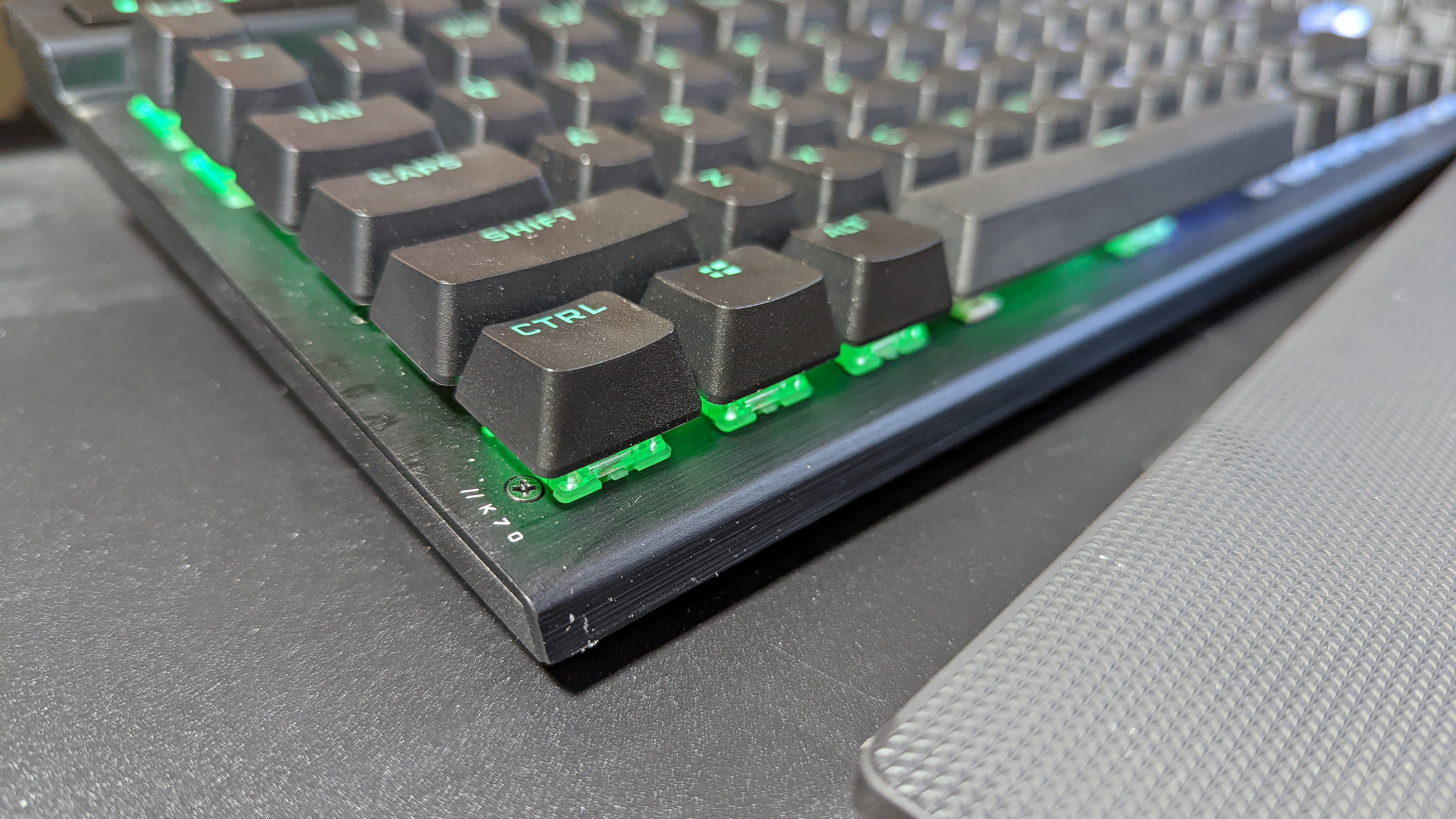
The keyboard also features a full N-key rollover and 100% anti-ghosting, which basically means that all of your keypresses will register no matter how fast you type. You can also create up to 50 onboard profiles with the K70 RGB Pro (I doubt anyone will use that many, but you never know).
The K70 RGB Pro is powered by Axon, which is an embedded onboard system running on a microcontroller unit. According to Corsair, this chip allows the keyboard to have an average of less than a 0.25ms latency.
Bottom line
The Corsair K70 RGB Pro is a solid keyboard, and while it doesn’t have many bells & whistles, it’s hella fast and incredibly reliable.
However, if you’re looking to upgrade your rig with something a little more comfortable on the hands, consider checking out the Razer Huntsman V2. But it is going to cost you a bit more, at $200.
Overall, the Corsair K70 RGB Pro is a great choice for typers and gamers alike, especially those going to tournaments.

Rami Tabari is the Reviews Editor for Laptop Mag. He reviews every shape and form of a laptop as well as all sorts of cool tech. You can find him sitting at his desk surrounded by a hoarder's dream of laptops, and when he navigates his way out to civilization, you can catch him watching really bad anime or playing some kind of painfully difficult game. He’s the best at every game and he just doesn’t lose. That’s why you’ll occasionally catch his byline attached to the latest Souls-like challenge.
